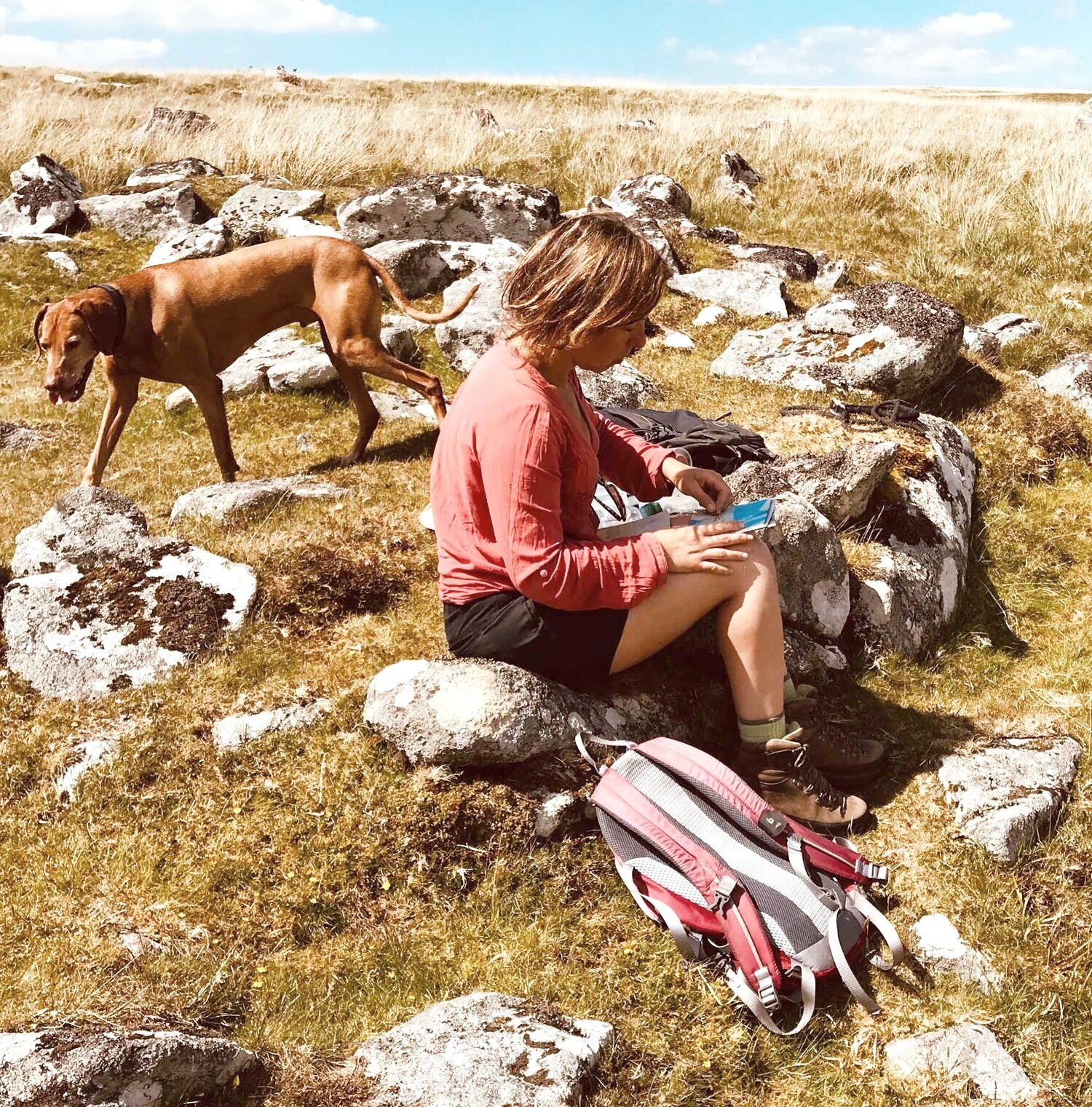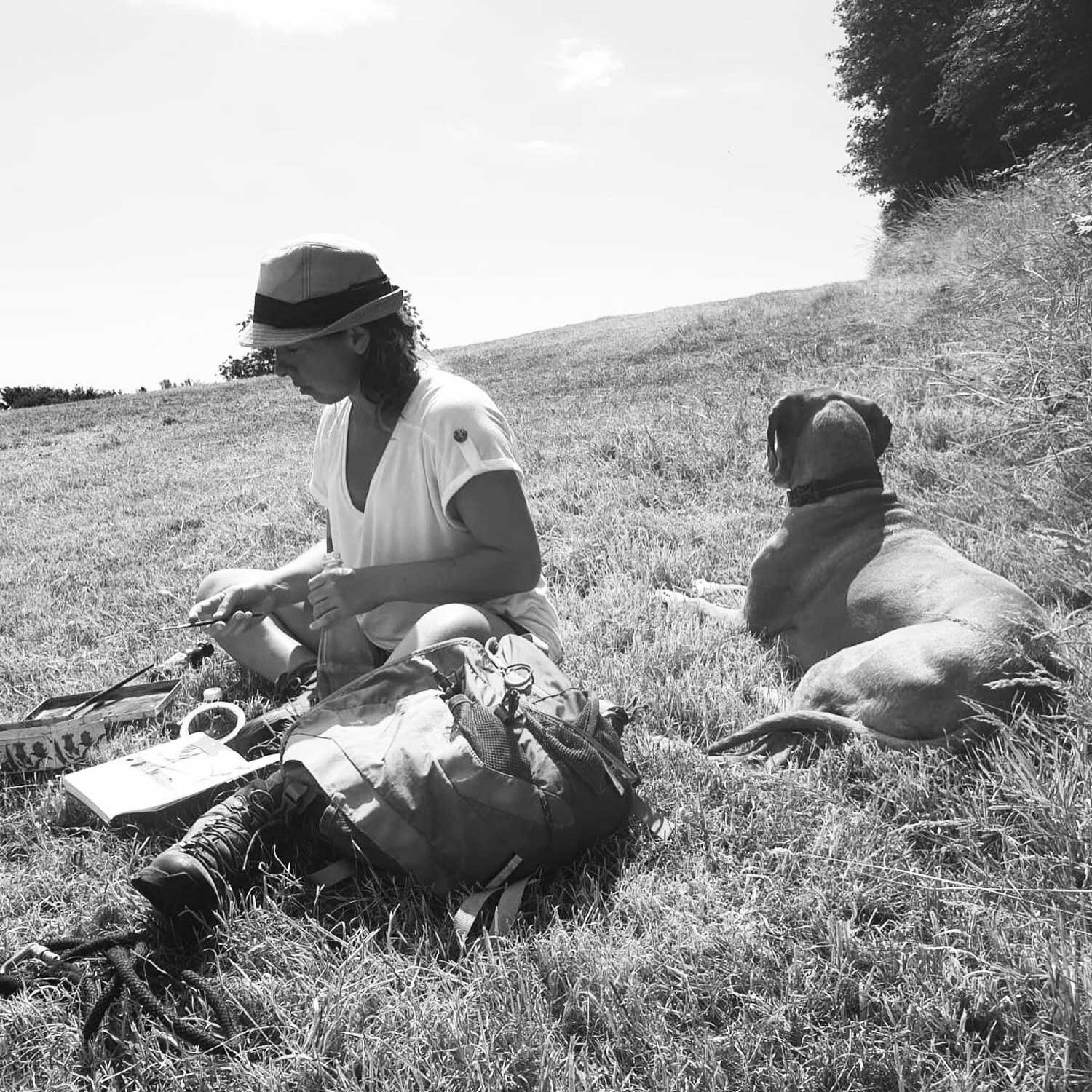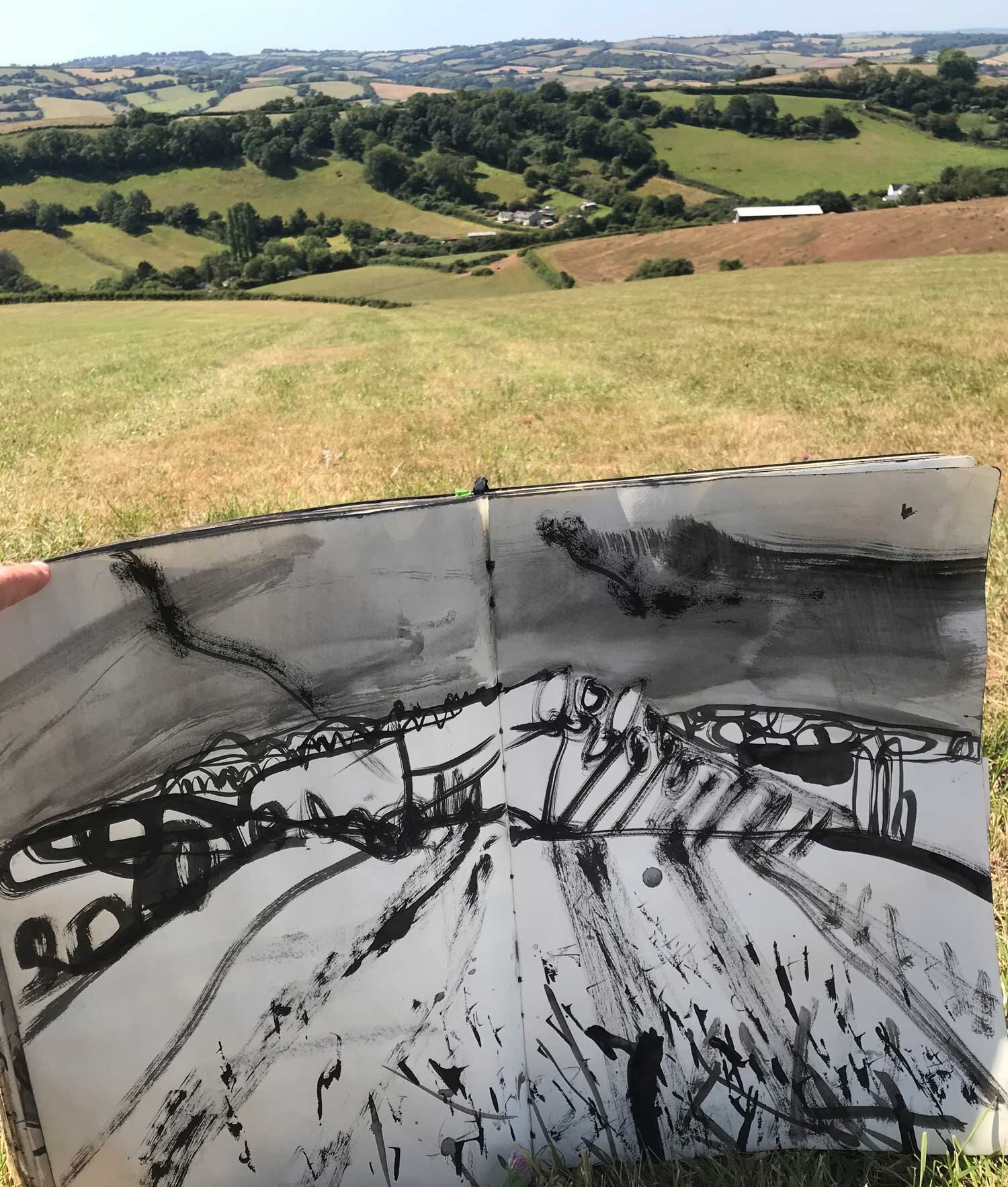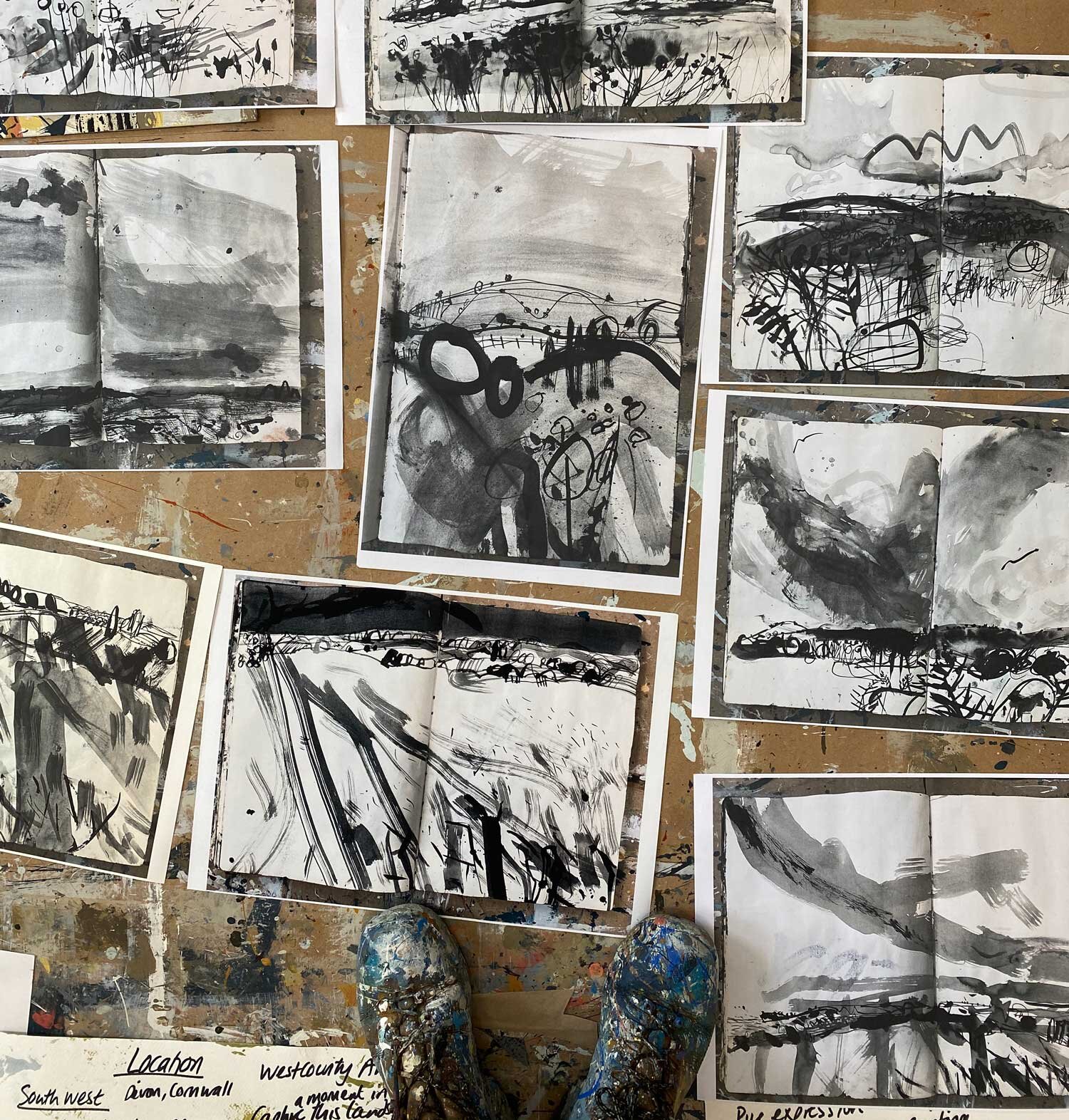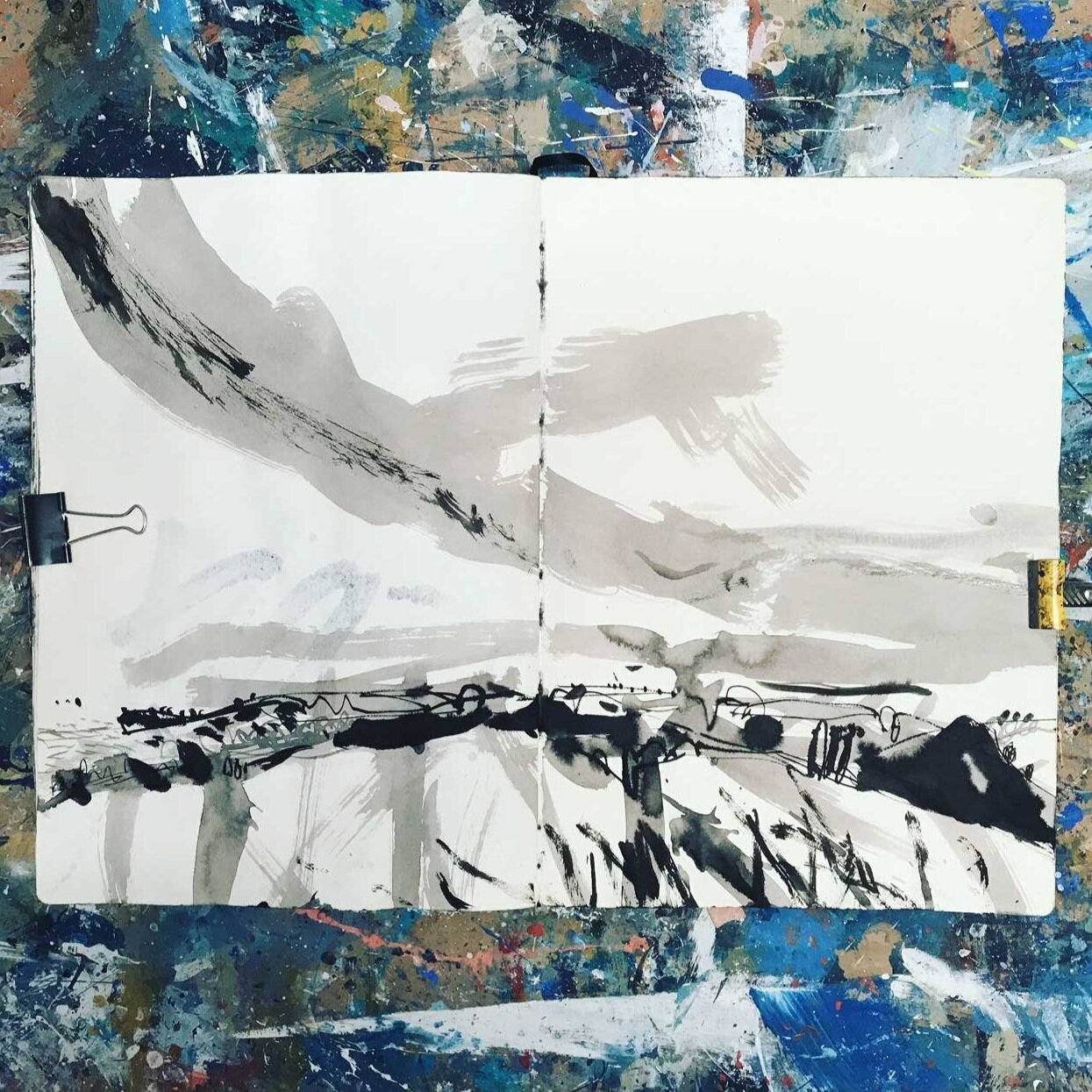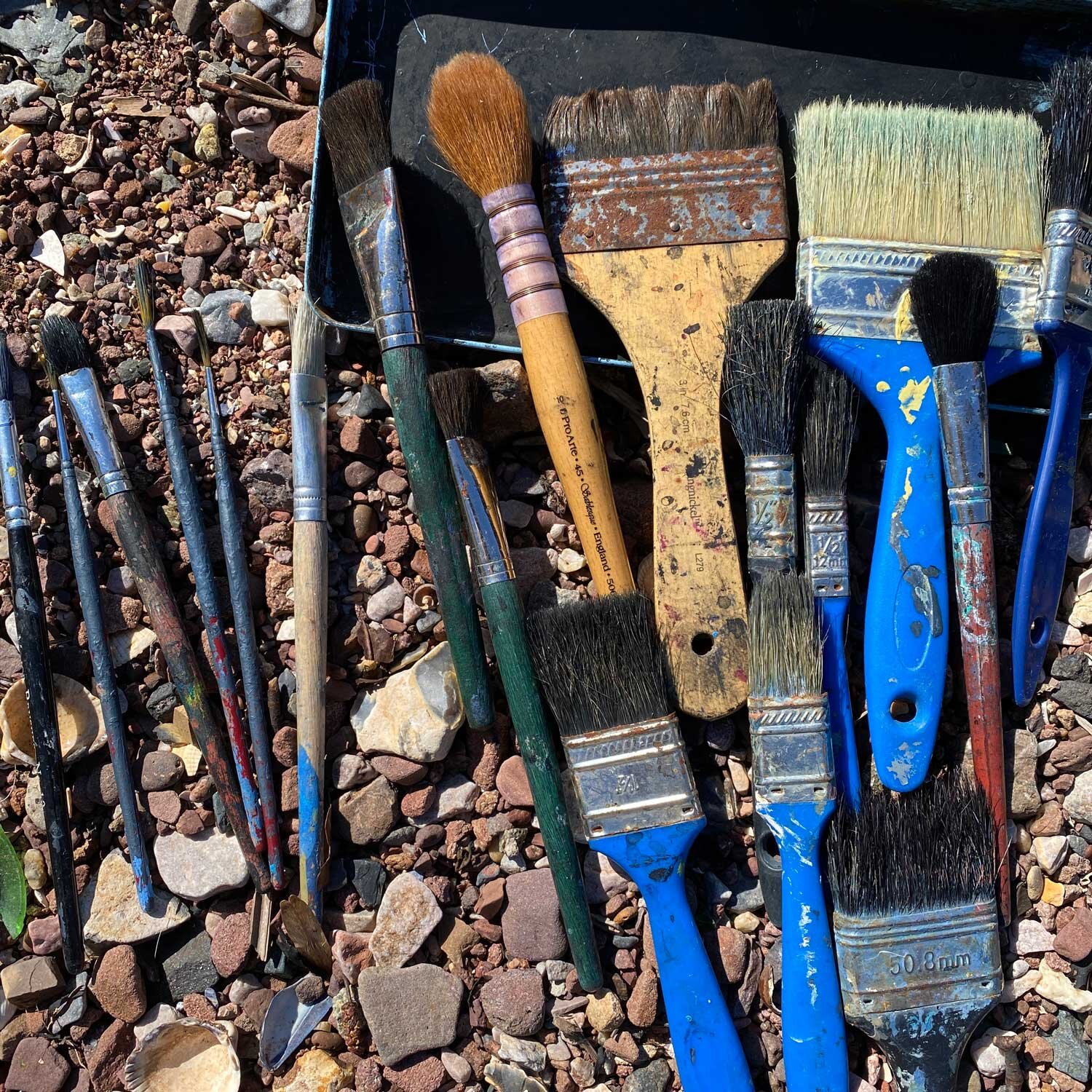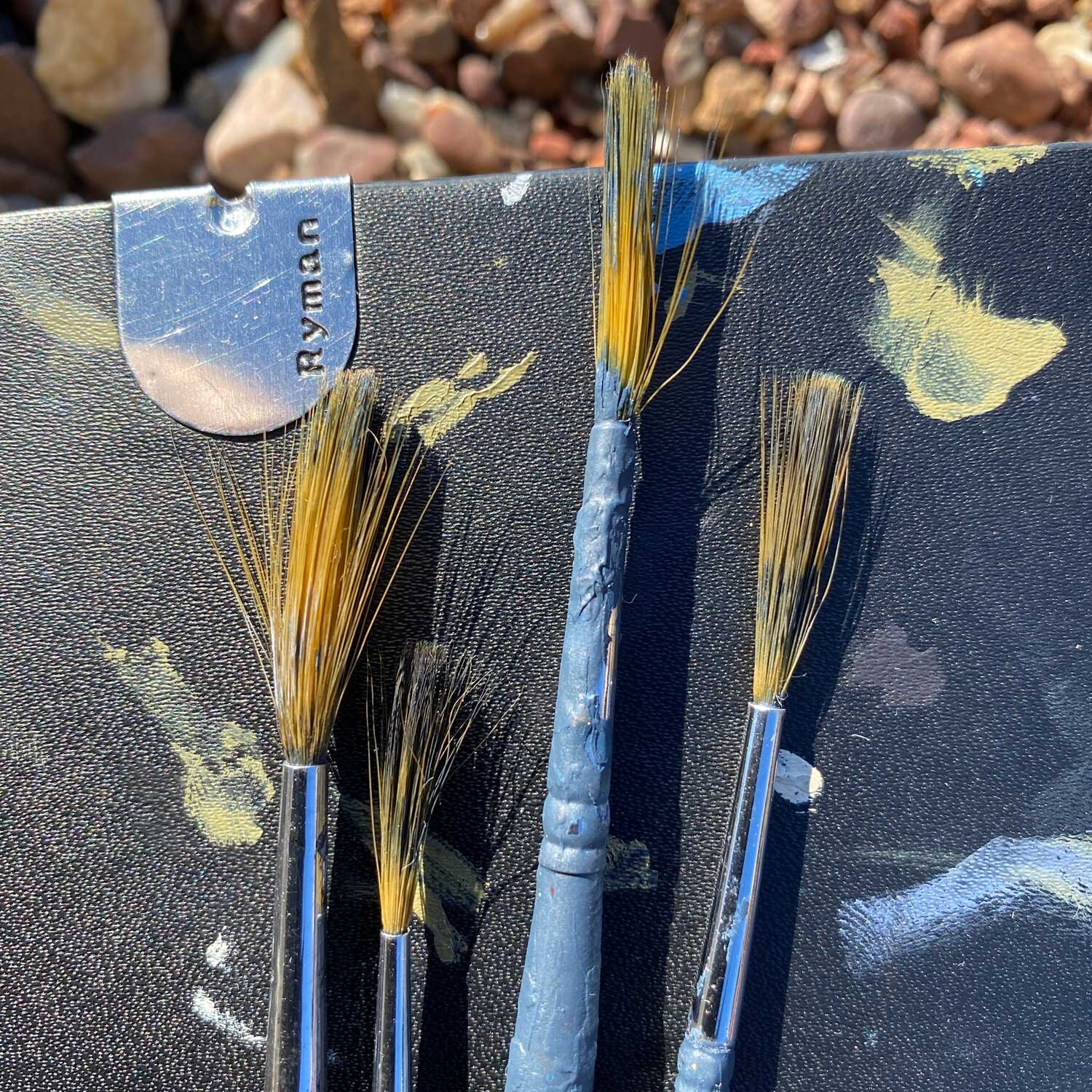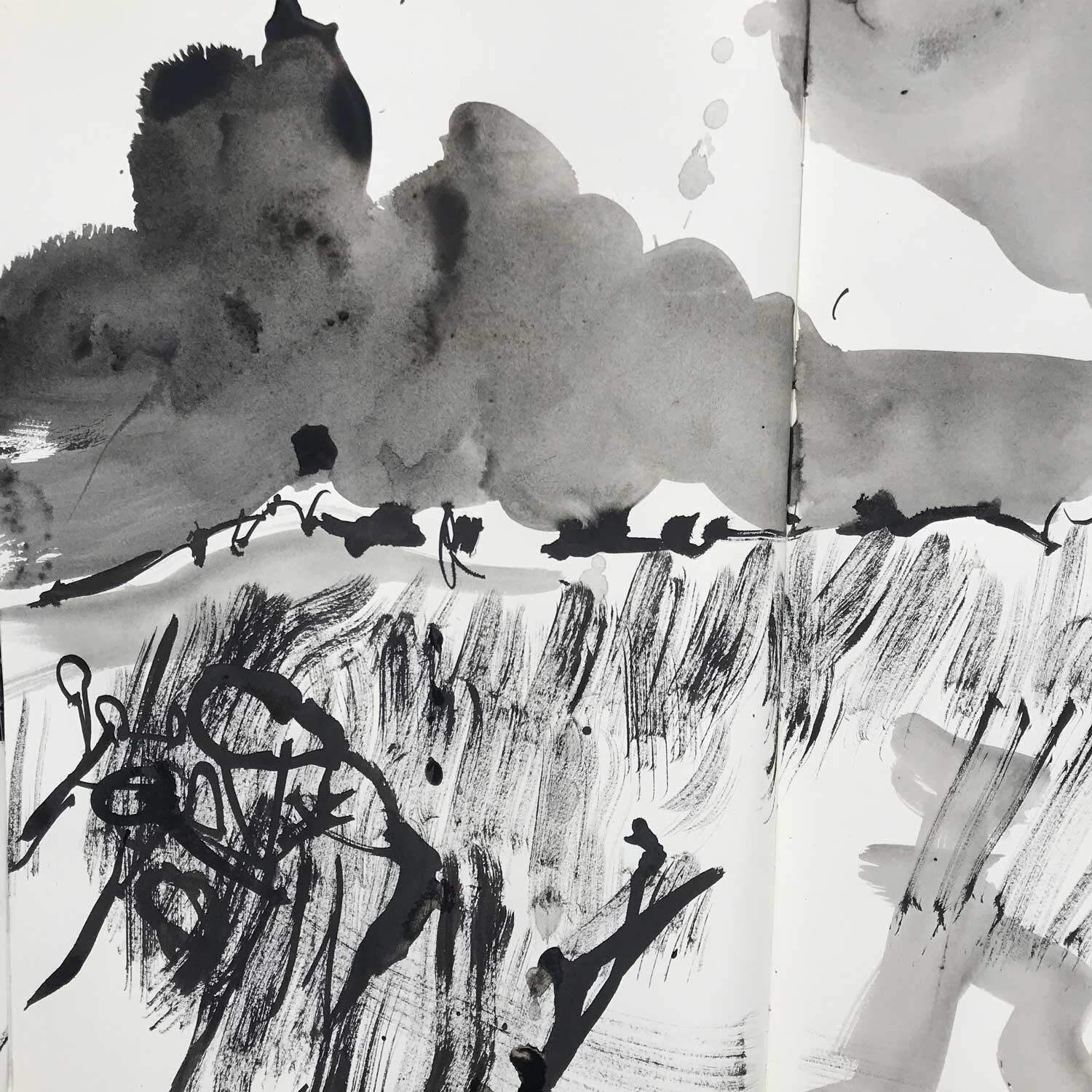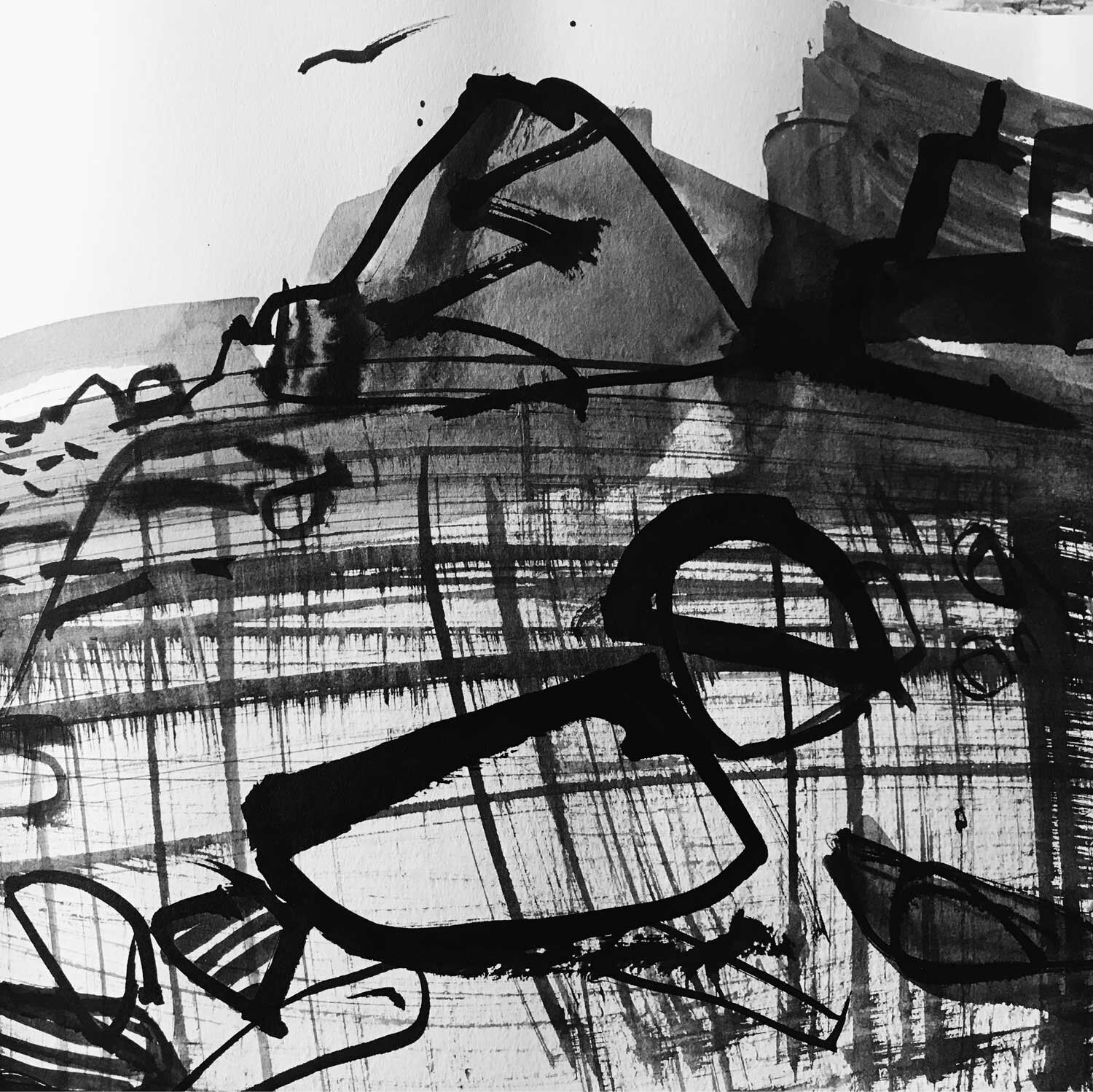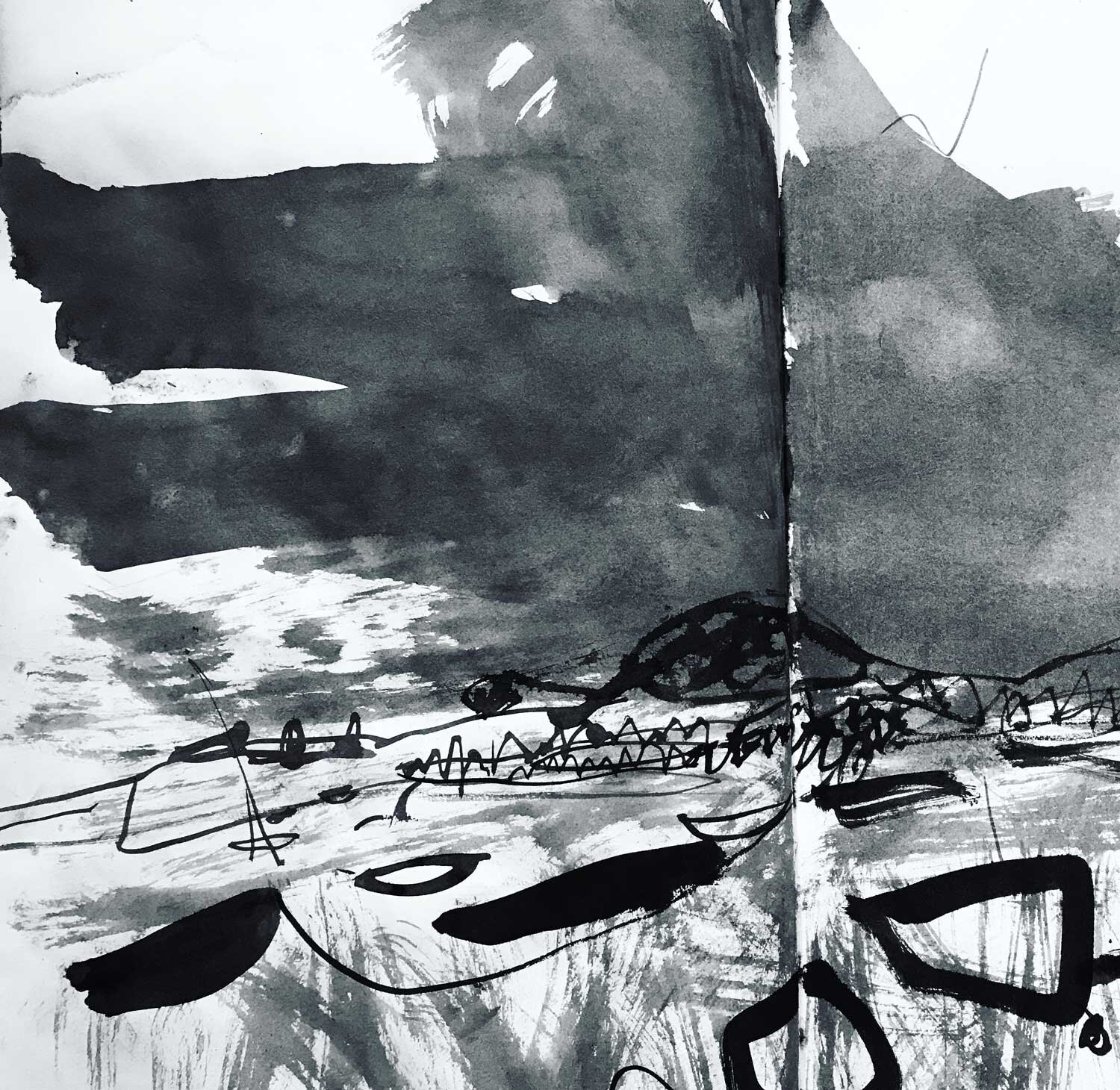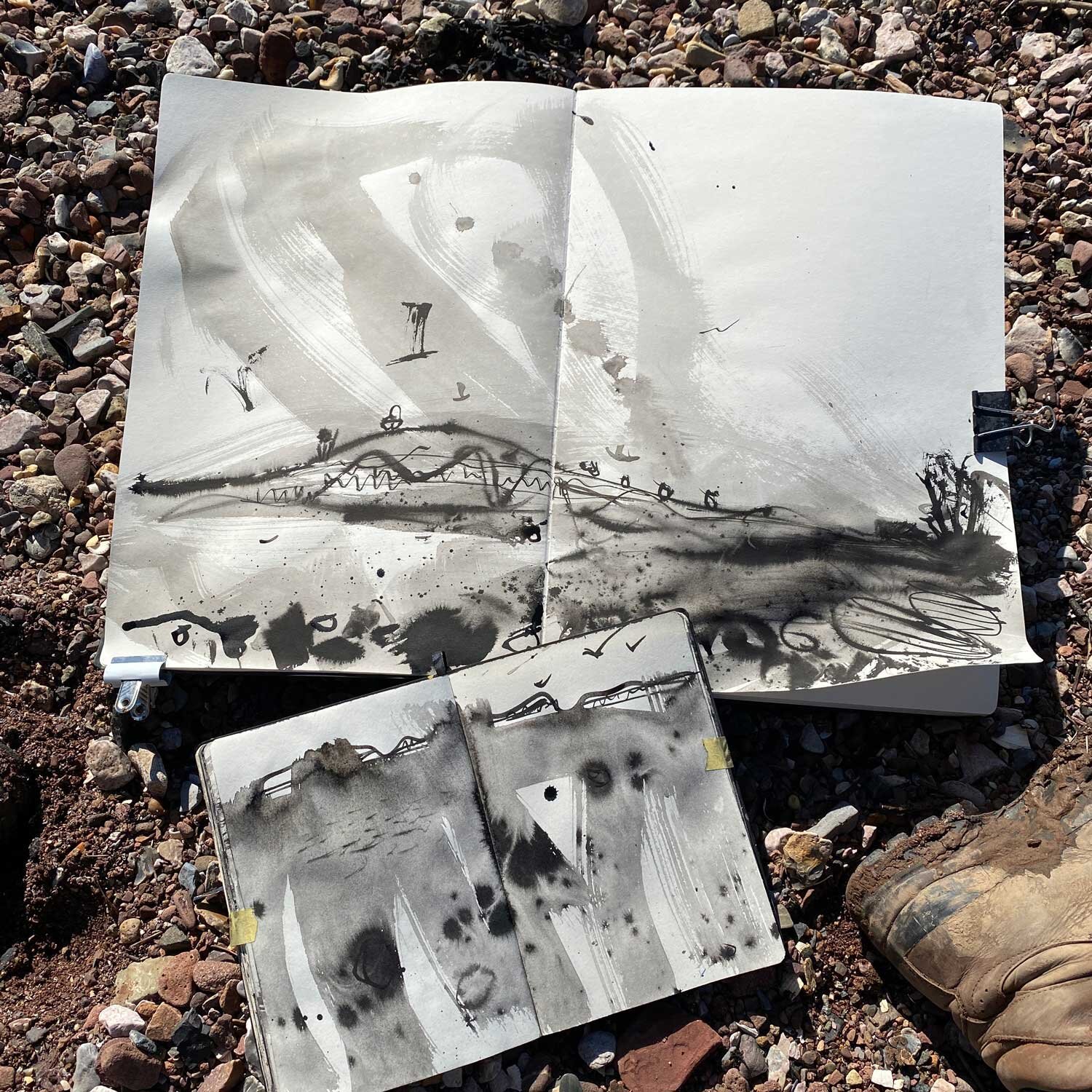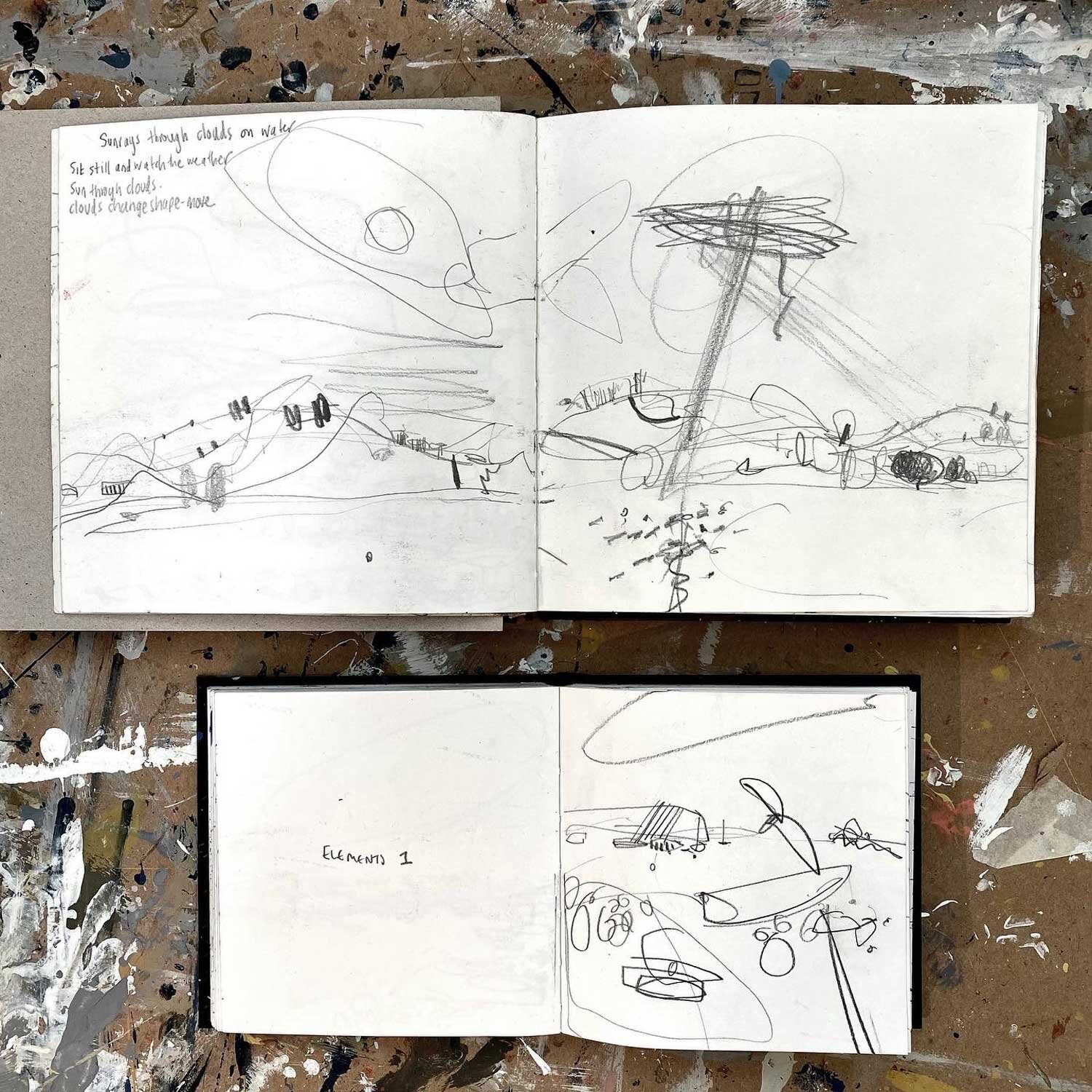Drawing Outdoors
Getting outside and drawing the landscape is the best feeling in the World! In this post I talk about the tools and techniques i’ve mastered to capture a sense of place whilst on location.
Inspiration
Drawing the landscape is at the heart of my work. Putting my walking boots on and heading out fills me with excited anticipation. Over time i’ve come to realise you don’t need prime locations or the best view points to inspire your work, it can be the park at the end of the road. It’s about the way you look and interpret what you see, and express this in your own unique way through composition and mark making. Once I understood this I found inspiration everywhere. I became more interested in revisiting the same place to see how it changed over time. I experienced the change in weather, growth of new trees and plants, and the effect of the seasons. These became the qualities I wanted to convey in my work.
Materials of choice
It takes time to find your materials of choice. From drawing to painting, the choice is so varied. In the end it’s the personality of the marks and behaviour of the material which will draw you to it. I discovered ink whilst on my MA in Illustration. Ink is the perfect medium for location work. It’s versatile nature means it can be delicate and bold; dark and light; opaque and translucent. Over time i’ve built up a solid ‘Location Drawing’ equipment list that is striped down to the bare basics for weight purposes. Other than the ink, water, rag and sketchbooks, a wide range of brushes is the most important edition.
Video of Landscape Artist Sam Boughton
Sam Boughton - Drawing equipment for location work
Brushes Galore
Each brush in my tin creates a different mark. It doesn’t matter if it’s a dried old decorators brush, if the mark is interesting it goes in the tin. If I were to divide them up into categories there would be three types: Thin / Wide / Mop Head. The thin brushes create fine delicate lines and are wonderful for detail. The wide ones are perfect for big sweeping marks and laying down areas of tone. The soft mop head brushes hold tons of water so are great for big splashes and puddles of colour. Having a rich variety of brushes means I can create more exciting work, full of different marks and interesting textures.
Below is brushes in my tin and the ink paintings below demonstrate the variety of marks that can be achieved.
And Finally Sketchbooks…
A little word has to be said about sketchbooks. My belief is that sketchbooks are the place for experimentation. I take out 2-3 different sizes. They are never expensive. Ive settled on a range from Rymans stationers which have a waterproof cover! Great for rainy old England! In the A3 I tend to add more details as I have a much larger space to take in elements within the landscape. I’ll also use the biggest brushes. It’s more of a physical process in the larger sketchbooks. In the smaller A5 size I reduce the landscape to just a few marks. Fields may become 2-3 brush strokes. This is when I really begin to simplify and abstract the landscape. My sketchbooks are never a place to create finished work, it’s purely for ideas and observations!
Happy sketching!
Sam xxx

